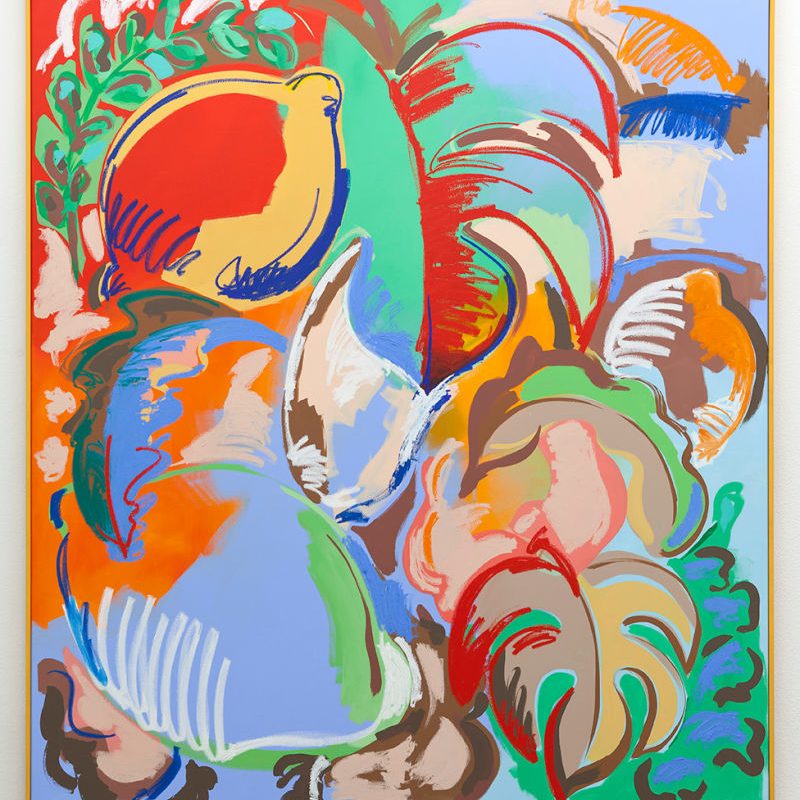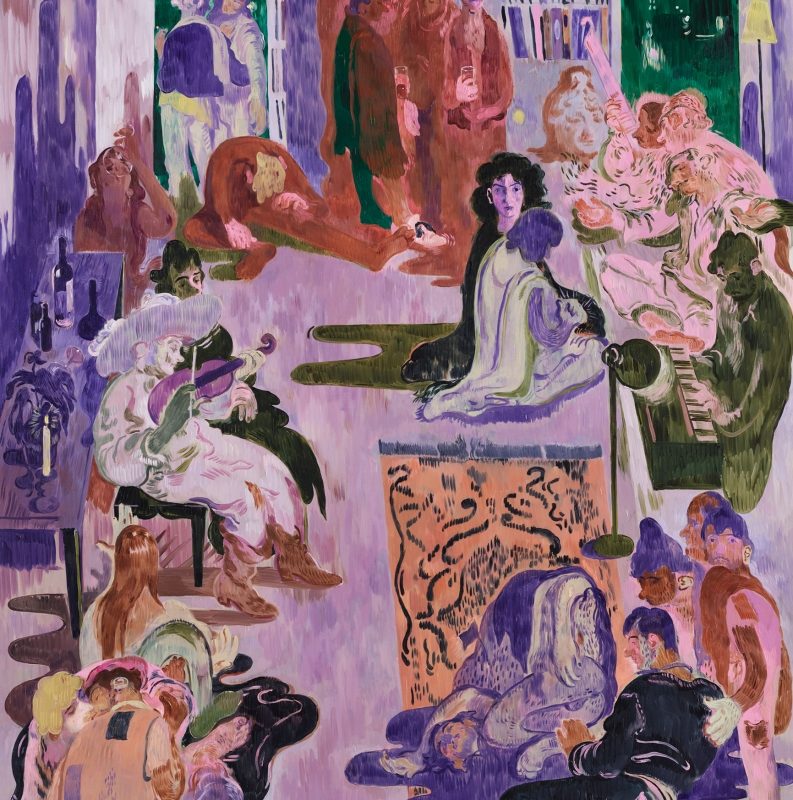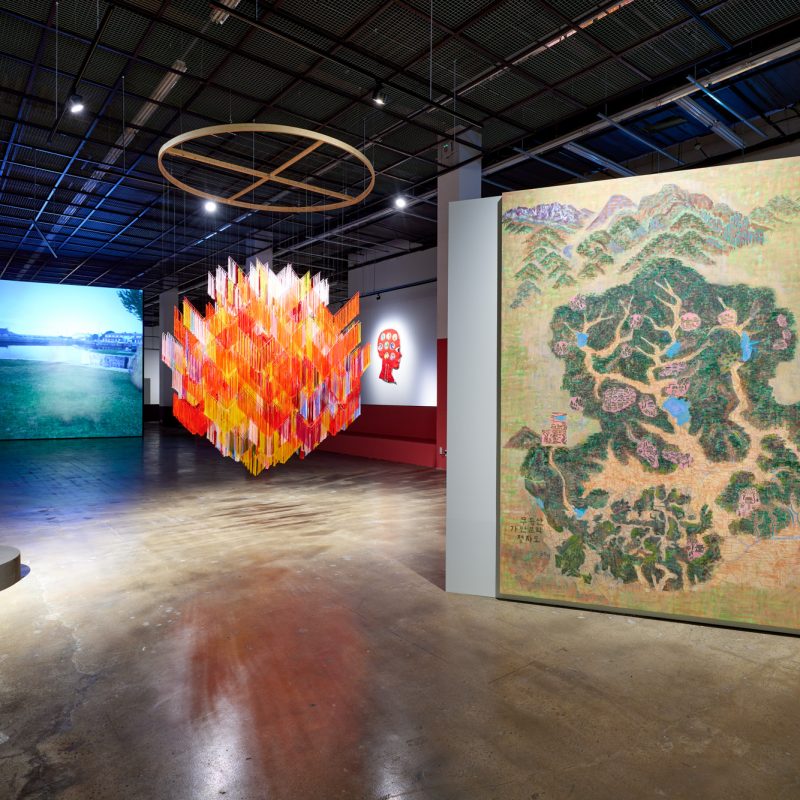Besides some institutional presence and gallery representation, contemporary art from Central Asia is still under the radar. This provides a window of opportunity for international collections focusing on emerging markets and decentralised artistic communities.
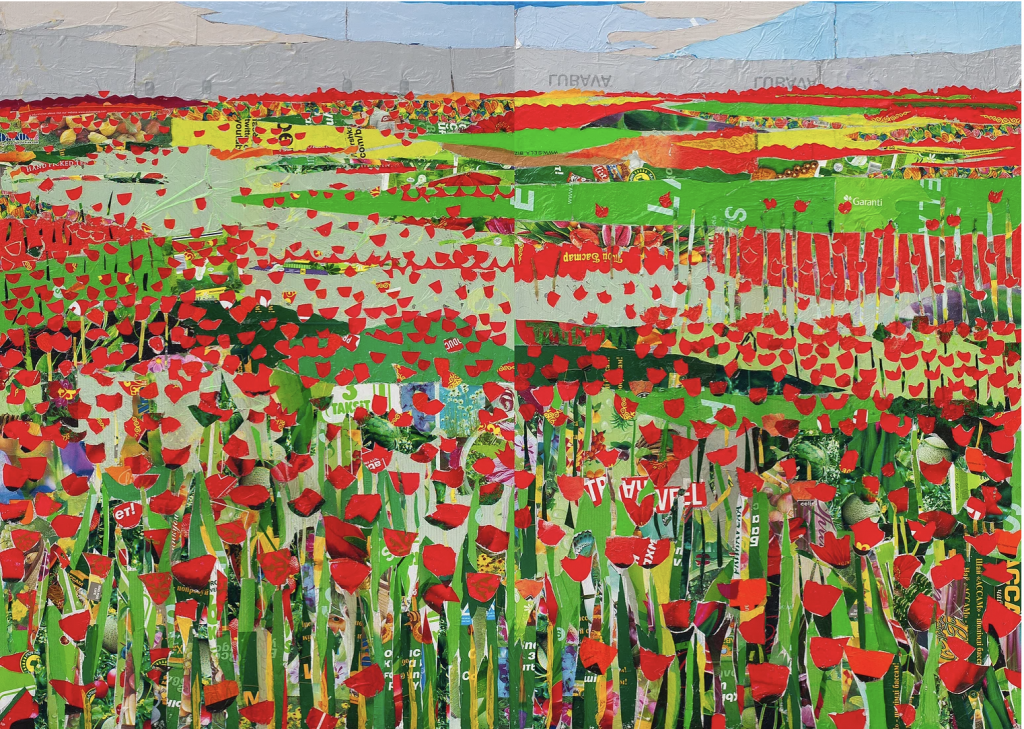
Saule Suleimenova, Ala Dala, Zhetysu, plastic bags on polycarbonate, 150 x 214 cm, 2016. Image courtesy of Qazart.
There are approximately 40 active artists in the region, mostly living and working in Kazakhstan. Saule Suleimenova’s latest body of work features reused plastic bags that she applies onto polycarbonate sheets using a glue gun. The results are visually appealing figurative paintings that often deal with the decolonial perception of historical events, feminism, identity, and recent shifts in the political landscape of Kazakhstan. Suleimenova’s works were recently acquired by Alain Servais, Sharjah Art Foundation, as well as several established collections in the country. Her market has been steadily growing since the 2000s. The price range varies from $2,500 for works on paper to $35,000 for the largest cellophane painting, with an average price for a smaller piece being $12,000.
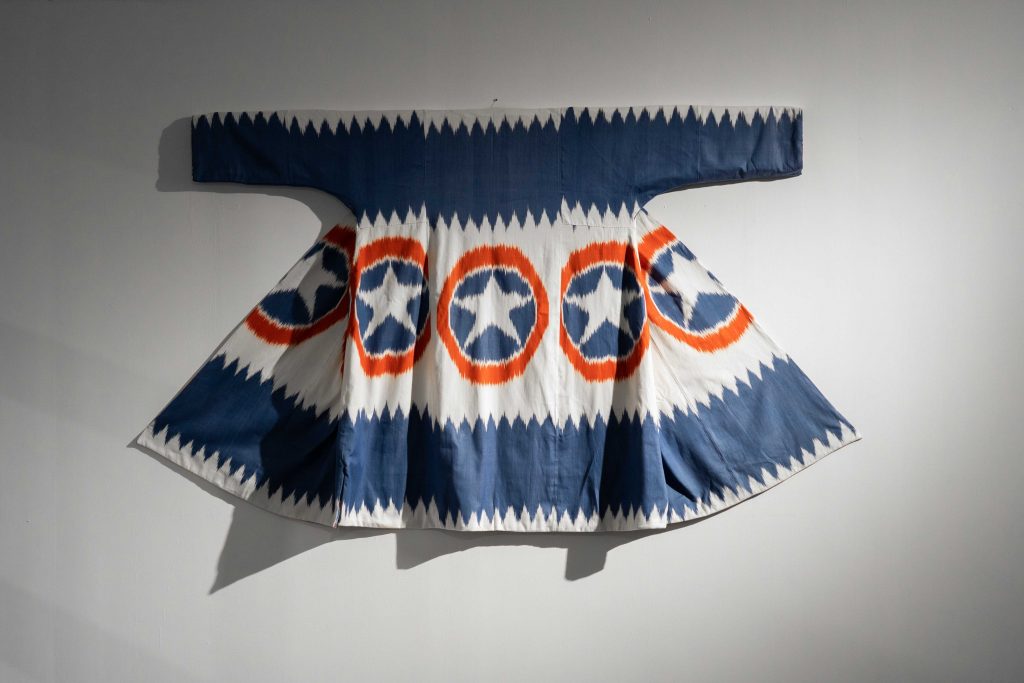
Dilyara Kaipova, Captain America, Chapan, textile, 123 x 207 cm, 2016. Image courtesy of Aspan Gallery.
Based in Tashkent, Dilyara Kaipova is interested in the clash of traditional Uzbeki abra (motifs and patterns often found on traditional textile and clothing) and symbols of pop culture, such as aliens, Mickey Mouse, and Captain America. These seemingly wearable objects are usually installed on a wall like a hanging kimono with the intention to invert the process of globalisation — letting something authentic localise internationally recognisable iconography. The artist creates a playground where the disappearing tradition of wearing the abra finds a new birth through the appropriation of Western visual vocabulary. Kaipova’s work has been exhibited in Sapar Contemporary in New York in 2019, Asanbay Center in Bishkek, and Women in Art in Dubai. Her work is present in the permanent collections of the State Silk Museum in Tbilisi, Stedelijk Museum in Amsterdam, as well as the Royal Ontario Museum in Ontario. Despite the rather complicated medium, Kaipova’s pieces are under $4000, making her work approachable for young collectors to acquire one of the best female artists in the region.
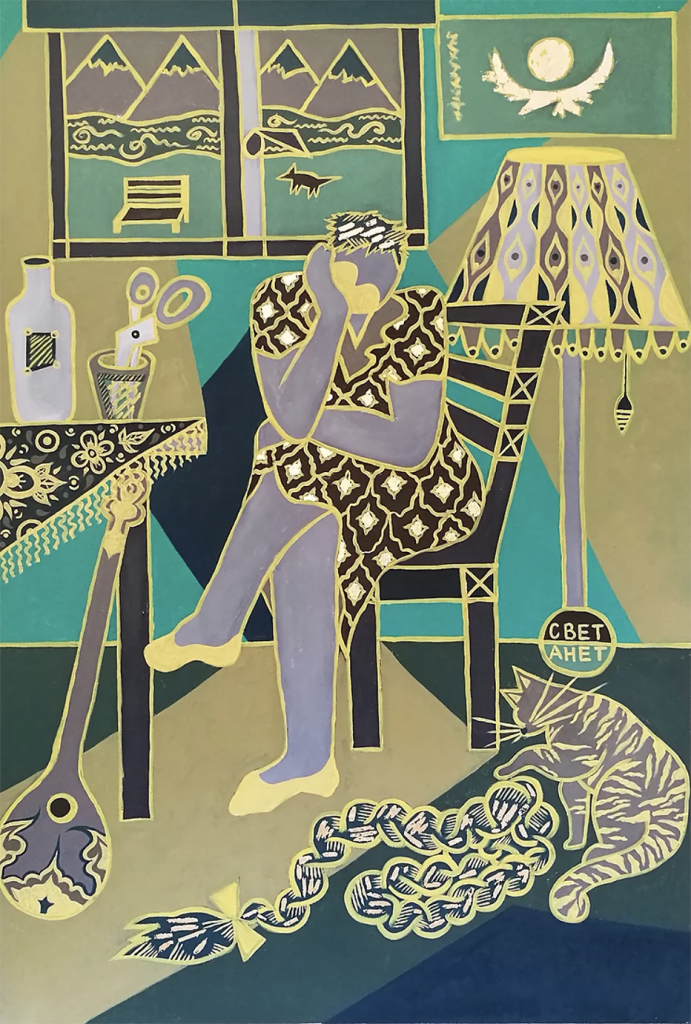
Aziza Shadenova, Woman in the Dark, oil and gold leaf on canvas, 150 x 100 cm, 2017. Image courtesy of Qazart.
Aziza Shadenova is a young female artist whose spirit could not have been anything but nomadic. Born in Uzbekistan, she spent her childhood in Kyrgyzstan before graduating from Central Saint Martins College of Art and Design in the UK where she currently lives and works. Her rhythmic paintings often capture braids — a result of ritualised, repetitive actions that trigger a similar set of feelings that shamanism or cooking does. Her art is about the search for form, not unlike the approaches in Russian Constructivism towards the disappearing crafts of somewhat colonised tapestry, weaving, language, and more broadly, the household. Shadenova’s obsession with the physicality of women’s hair makes more sense if you think about all the identities, narratives and crossroads that Central Asia absorbed, recycled and gifted the world with.
Within the past decade, Shadenova’s works appeared in exhibitions such as At the crossroads: Contemporary Art from the Caucasus and Central Asia at Sotheby’s in London, the 4th Moscow International Biennale for Young Art, Focus Kazakhstan: Post-Nomadic Mind in London as well as Astana Art Show in the capital of Kazakhstan. Prices range between $1,000 to onwards of $8,000.
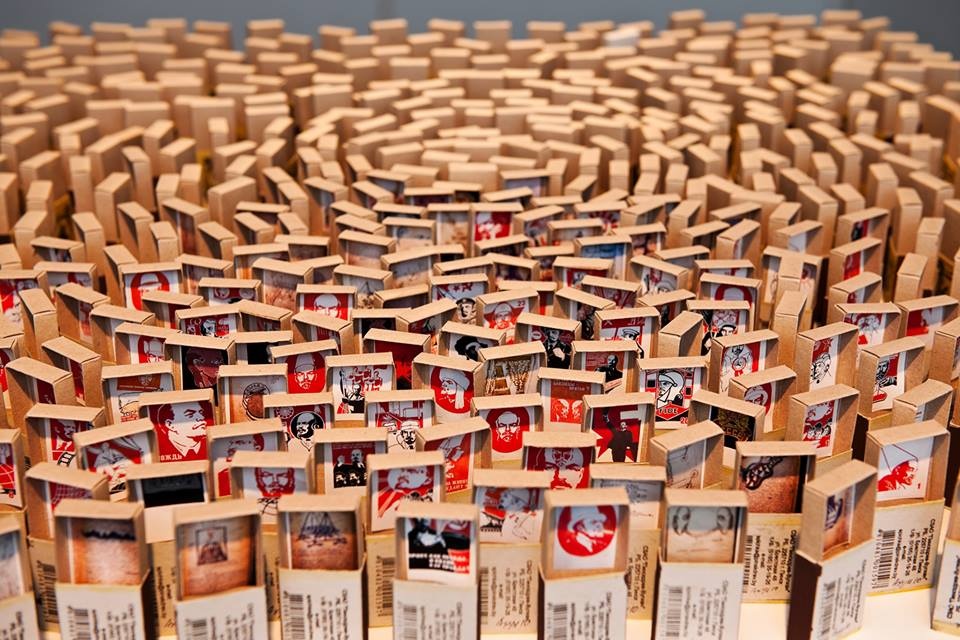
Vyacheslav Akhunov, 1m2, matchboxes, 1978-2007. Image courtesy of Aspan Gallery.
Tashkent-based Vyacheslav Akhunov is the only artist from Central Asia to be ever included in documenta in Kassel. His use of collage and mixed media aims to desacralise the common imagery of Soviet propaganda, which is powerful because it can so easily reproduce itself. The face of Lenin covered with mantras or his portraits hidden inside domino-shaped match boxes are reminiscent of a certain irony which Chinese avant-garde artists used with the image of Mao. Even after the collapse of the Soviet regime, Akhunov’s art still remains sensitive enough for the authorities of Uzbekistan to impose a travel ban on him, which prevented the artist from attending his own exhibitions at venues such as The New Museum in New York (2011), Kiasma in Helsinki (2007), La Biennale de Montréal (2007), and the Singapore Biennale (2006) to name a few. The price range for Akhunov is €5,000 to €15,000. The market favours collages by the artist and the average price for one is €10,000.






